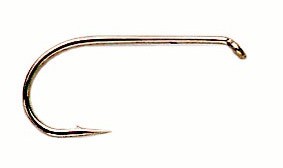Fly In Focus - Elk Hair Sedge
Fly In Focus - Elk Hair Sedge!
Paul Procter Talks all things Elk Hair Caddis. The history of them, tying them and how he fishes them!
There are lots of sedge/caddis patterns we can choose from when it comes to imitating sedges on the warmer evenings, however perhaps one of the most versatile dressings is the ‘Elk Hair Caddis’. Developed by an American called Al Troth this pattern can be dressed with, or without a palmered hackle. Obviously, a fly with the body palmered hackle has superior floating properties, which comes in handy when fishing more animated water, like a tumbling pool on a stream, or a big, rolling wave on a reservoir. A hackle-less version naturally rides lower in the surface film, making it a favourite where smooth, flat water occurs and when trout are targeting stillborn, or spent caddis that lie almost flush in the film.

Apparently there’s over 300 caddis species here in the UK, which vary in size from say a size 6 hook, all the way down to a size 20. That said, I’m comfortable carry elk hair caddis in the size 8 to 16 range of hooks. Larger patterns also double as ‘search’ flies when little is rising at the surface as they represent a decent meal for trout that have one eye on the surface. They also work well in noisy water, especially on reservoirs when a gale whips up waves. Here, a size 8 busy elk hair can be deadly, especially if tweaked back. Smaller dressings obviously come into their own when trout are nabbing small caddis. They also have worth when fish are playing hard to get, here flies smaller patterns than the natural often win the day.

Fishing the Elk Hair Caddis
We’re generally taught to present our fly flies static, which on the whole is sound advice. However, immediately after emerging, adult caddis, hop and skip across the surface in an attempt to get airborne. Equally, female caddis returning to egg lay skitter across the surface as they deposit eggs. In both cases, caddis make a fair bit of disturbance, which in turn means we can actually work our flies back to mimic this behaviour.
As a rule, I’ll start with a static fly, however if this fails to illicit any response then I’ll start twitching my elk hair with short, sharp inch long tweaks of the fly line. On stillwaters this can often be exaggerated a little more by foot long pulls on the line, particularly as the light fades. Be careful though not to overdo this by ripping the fly back too quickly. Far better is to tweak the fly a couple of times then simply let it sit motionless for a few seconds, before repeating the process.
Keep your flies Dry and floating with some good floatant!
Simply squeeze some Gink onto the back of your hand or onto your finger and work it into the elk hair fibres to keep you Caddis afloat!

I’m a bit of a stickler for using a single fly when it comes to dry fly fishing. Personally, I feel you get improved presentation now and with only one fly at the surface there’s less likelihood of drag when river fishing. However, caddis often hatch in huge numbers sending trout into a feeding frenzy. Fishing two dry flies positioned 4ft apart doubles your odds during the melee. And because we’re actually ‘working’ our flies, drag becomes far less of an issue now!



















